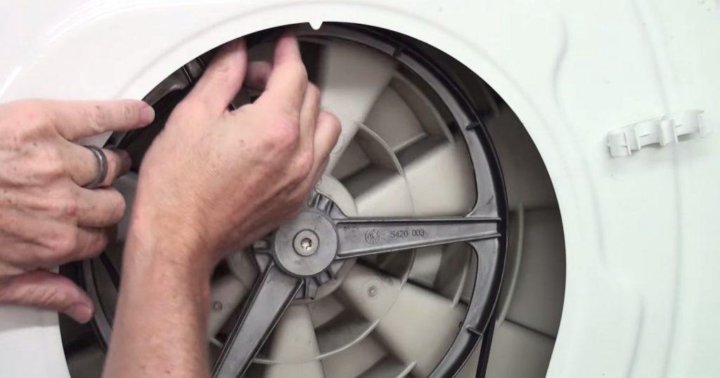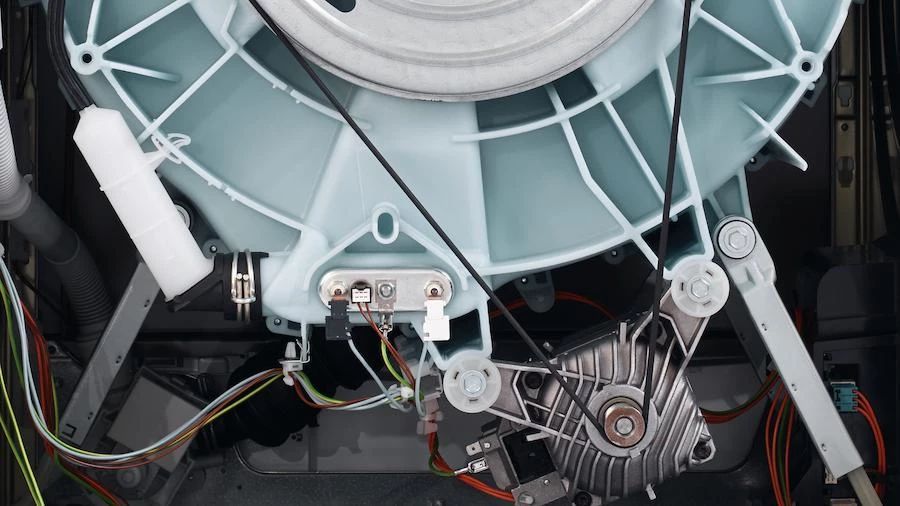Washing machines are indispensable household appliances, streamlining laundry tasks with efficiency and convenience. However, like any mechanical device, they are prone to wear and tear, with one of the most common problems being issues with the washing machine belt. The belt is a critical component that connects the motor to the drum, enabling it to spin and agitate during wash cycles. When the belt malfunctions, it can disrupt the entire operation of the machine. Understanding the symptoms, signs, causes, and solutions for washing machine belt issues is essential for timely intervention and to avoid costly replacements.
What is a Washing Machine Belt?
The washing machine belt is a durable, flexible band typically made of rubber or reinforced materials. It transfers power from the motor to the drum, allowing the drum to rotate during washing, rinsing, and spinning cycles. In some models, multiple belts are used to control different functions, such as agitation and spinning. Over time, belts can stretch, fray, slip, or snap due to constant use, overloading, or lack of maintenance. Recognizing the signs of a failing belt can save you from prolonged downtime and ensure your laundry routine stays on track.
Common Symptoms of Washing Machine Belt Issues
When a washing machine belt starts to fail, the appliance often exhibits noticeable symptoms. These warning signs can help you identify the problem early and take appropriate action. Here are the most common symptoms associated with washing machine belt issues:
1- Drum Not Spinning or Agitating
One of the most obvious signs of a belt issue is when the drum fails to spin or agitate. If you hear the motor running but the drum remains stationary, the belt may have slipped off its pulley or snapped entirely. This prevents the drum from performing its essential functions, leaving clothes unwashed or improperly rinsed.
2- Unusual Noises
A worn or loose belt can produce a variety of noises, such as squealing, screeching, or thumping sounds. These noises occur when the belt slips on the pulleys or rubs against other components. In some cases, a broken belt may cause a loud banging noise as it flaps around inside the machine.
3- Burning Smell
A distinct burning odor during operation is a red flag. This smell often results from a belt slipping and generating friction against the pulleys or motor. The excessive heat can cause the rubber belt to burn, leaving a noticeable smell that signals the need for immediate attention.
4- Incomplete or Slow Spin Cycles
If your washing machine struggles to complete spin cycles or spins at a slower rate than usual, the belt may be stretched or slipping. This can result in clothes coming out wetter than expected, as the drum cannot reach the necessary speed to extract water effectively.
5- Error Codes or Stopped Cycles
Modern washing machines are equipped with sensors that detect operational issues. A faulty belt may trigger error codes on the display panel or cause the machine to stop mid-cycle. These interruptions indicate that the machine is struggling to perform its tasks due to a mechanical failure.
6- Visible Wear or Damage
If you inspect the belt (accessible by removing the machine’s back or bottom panel), you may notice visible signs of wear, such as cracks, fraying, or stretching. A belt that appears shiny or glazed on one side is likely slipping and losing traction.
Causes of Washing Machine Belt Problems
Understanding why washing machine belts fail is key to preventing recurring issues. Several factors can contribute to belt deterioration:
Overloading the Machine: Consistently overloading the washing machine places excessive strain on the belt, causing it to stretch or snap over time. Each model has a recommended load capacity, and exceeding it can accelerate wear.
Age and Wear: Like any component, belts degrade with age. Continuous use over years can weaken the material, making it prone to cracking or breaking.
Improper Installation: If a belt is replaced incorrectly or with an incompatible size, it may not fit snugly on the pulleys, leading to slipping or premature failure.
Lack of Maintenance: Dust, lint, and debris can accumulate around the belt and pulleys, increasing friction and wear. Regular cleaning and maintenance can help extend the belt’s lifespan.
Motor or Pulley Misalignment: If the motor or pulleys are misaligned, the belt may not sit properly, causing uneven wear or slippage.
Solutions for Washing Machine Belt Issues
Addressing washing machine belt problems promptly can restore your appliance to full functionality. Depending on the severity of the issue, you may be able to handle minor fixes yourself or require professional assistance. For expert help, consider a washing machine repair service in Dubai, where skilled technicians can diagnose and resolve belt-related problems efficiently. Below are the primary solutions for washing machine belt issues:

Inspect and Replace the Belt
If the belt is worn, frayed, or broken, replacement is the most effective solution. To replace the belt:
- Unplug the washing machine for safety.
- Remove the back or bottom panel to access the belt and pulleys.
- Check the belt for damage and note its position on the pulleys.
- Install a new belt compatible with your machine’s make and model.
- Ensure proper tension and alignment before reassembling the machine.
- Always consult your washing machine’s manual for specific instructions, as designs vary across brands.
Adjust Belt Tension
If the belt is slipping but not damaged, it may simply need tightening. Some machines have adjustable pulleys or motor mounts that allow you to increase tension. Be cautious not to overtighten, as this can strain the motor or bearings.
Clean Pulleys and Surrounding Areas
Dust and debris on the pulleys can reduce the belt’s grip, causing slippage. Use a clean cloth to wipe down the pulleys and remove any buildup. This simple maintenance step can improve performance and prevent further issues.
Check Motor and Pulley Alignment
Misaligned components can cause the belt to wear unevenly. If you suspect misalignment, consult a professional technician to reposition the motor or pulleys correctly.
Avoid Overloading
To prevent future belt problems, adhere to the manufacturer’s load capacity guidelines. Distribute clothes evenly in the drum to minimize strain on the belt and other components.
Schedule Regular Maintenance
Routine maintenance, such as cleaning the machine and inspecting the belt, can catch potential issues early. Consider professional servicing annually to keep your washing machine in top condition.
Preventive Tips for Long-Lasting Belt Performance
To minimize the risk of belt issues, incorporate these preventive measures into your laundry routine:
- Follow Load Guidelines
- Avoid overloading the machine, and balance heavy items like towels or blankets to reduce stress on the belt.
- Clean Regularly
- Periodically clean the drum, filter, and accessible areas to prevent debris buildup that could affect the belt.
- Monitor for Warning Signs
- Pay attention to unusual noises, smells, or performance issues, and address them promptly to avoid further damage.
- Use the Right Detergent
- Excess suds from improper detergent use can strain the machine’s components, including the belt. Use high-efficiency (HE) detergent for modern machines.
Professional Inspections
Schedule periodic checkups with a trusted repair service to ensure all components, including the belt, are functioning optimally.
While some belt issues can be resolved with DIY efforts, complex problems like motor misalignment or electrical faults require professional expertise. A qualified technician can accurately diagnose the issue, recommend the best course of action, and ensure repairs are done safely. If you’re unsure about handling repairs yourself, don’t hesitate to contact a reputable service provider.
Conclusion
Washing machine belt issues can disrupt your laundry routine, but with the right knowledge, you can identify and address them effectively. By recognizing symptoms like a non-spinning drum, unusual noises, or burning smells, you can take action before the problem worsens. Whether it’s replacing a worn belt, adjusting tension, or seeking professional help, timely intervention is key to restoring your machine’s performance. With proper care and maintenance, you can extend the lifespan of your washing machine belt and keep your appliance running smoothly for years to come.
